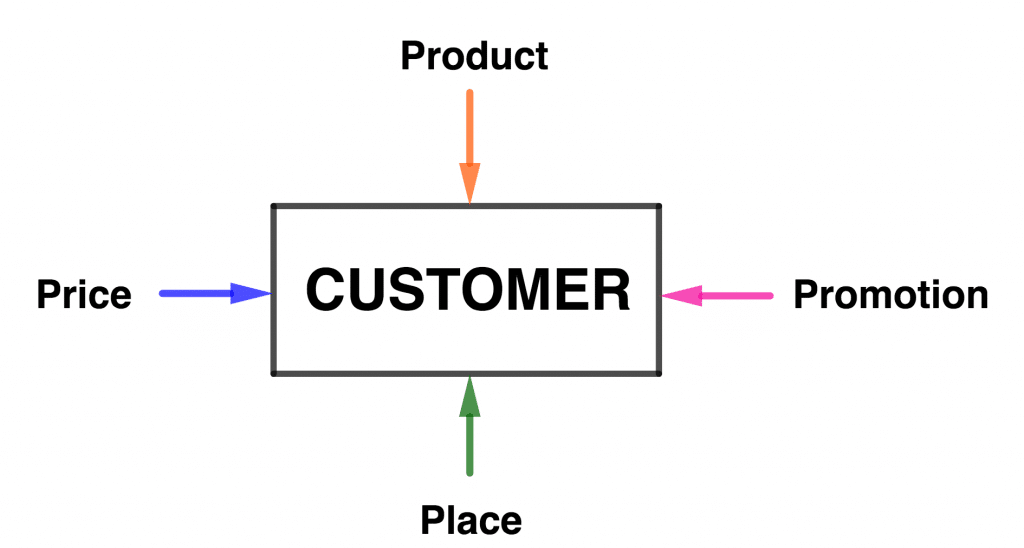A business enterprise has four variables to work with in setting up its marketing system. These are called the marketing mix and because each of the variables starts with the letter “P” they are also called the four Ps of marketing. The variables are product, price, promotion, and place.
The Four Ps of Marketing

Other decisions that go with product-line are;
1. Brand names
2. Packaging
3. Trade marks
4. Labeling
5. Number of products offered
6. Timing of introduction of new product
7. Effect of new products on existing ones
Product mix:
It is anything that satisfies a customer’s needs. A business must make a decision as to what product it will sell. Once a product line has been established it is constantly reviewed in the light of the customers changing needs and expectations.
Price mix:
On deciding a product line, the firm must decide how to price its product in order to make a profit. Price is defined as the exchange value for the goods and services supplied or to be supplied. It is a very important factor in the marketing mix because it represents the value of the products of a firm compared with that of its competitors.
A firm faces pricing decisions at four different times, namely;
1. When a product is introduced.
2. When economic or other conditions make it necessary to introduce a price change.
3. When competition imposes a price change in the market.
4. When the firm decides to engage in a multiple brand strategy. For example, a firm may market soap under four brand names at different prices.
Some pricing policies are;
Market Penetration: This pricing policy applies to new products. Its a situation where the price of a new product is set low initially as it enters the market.
Market Skimming: In this situation the producer is called the skimmer when he increases the price of goods so as to attract the wealthy buyers and make a quick profit and as the competition increases can end up reducing the price.
Place mix:
The element of place in the marketing mix deals with how the manufacturer distributes products to the consumers. There are two aspects of distribution; physical distribution and institutional distribution. Physical distribution deals with transportation while institutional distribution deals with the enterprises and individuals active in the transactions associated with the movement of goods or provision of services from the producer to the ultimate consumers.
Promotion Mix
Promotion mix deals with the communication aspect of the marketing mix. The purpose is to make the goods and services known to prospective customers i.e. creation of awareness. It stimulates market interest in the product by determining the relative contributions to be made by advertising, personal selling, and sales promotion.
Forms of Promotion
The various forms of promotion available to a marketing executiveThe executive, also referred to as the executive branch or executive power, is the term commonly used to describe that part of government which enforces the law and has overall responsibility... More to choose from or adopt are;
- Personal selling
- Sales promotion
- Publicity
- Public relations
- Product differentiation and branding/packaging
- Advertising



Responses